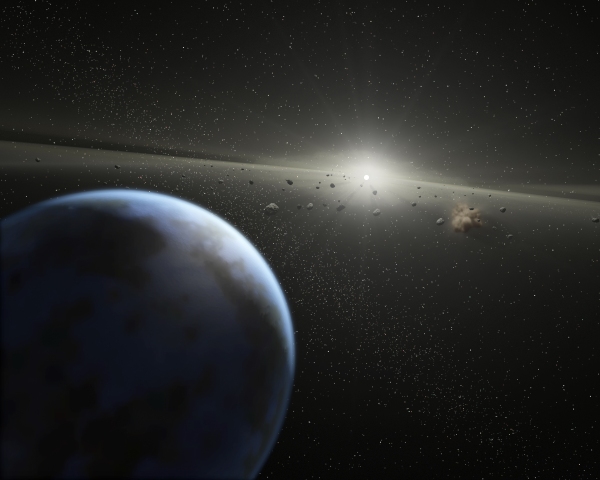Asteroids – Fuelling Humanity’s Future
Despite playing the villains in many a Hollywood movie, asteroids are in fact our friends when it comes to space travel. On a planet of dwindling resources and increasing pollution it is looking more and more likely that we will have to colonise space in the not-too-distant future and yet we are still unable to send manned missions beyond our own moon. The main stumbling block to this feat is a lack of resources to do this on any reasonable scale. One solution is to develop faster, more efficient technology (particularly propulsion), however this only allows us to reach a little further rather than providing any kind of permanent solution. So far the human race has regarded Earth as our only resource in the universe and so we mine it for all it has in order to make the most of what we’ve got. Yet beyond our sky, space is filled with energy – electrical storms flash about atmospheres, asteroids and comets hurtle through our solar system and cosmic rays ignite planets. There is a lot out there that we can harness.
Current space-programs rely on building craft on Earth and making short trips into space. Constantly escaping and re-entering Earth’s gravity in this way requires a vast amount of fuel, not to mention the reconstruction of jettisoned engine modules and repairing of damaged components. It also places the astronauts in a significant amount of danger during both take-off and re-entry. The practical and necessary next step is to launch craft from space with extremely specialised shuttles transporting personnel between an orbiting station and the Earth’s surface. A foundation for this has been laid with the creation of the International Space Station (ISS), beginning the era of long-term manned space missions.
With this in place we can begin to use resources outside of our planet. There are approximately 1000 known asteroids with diameters of one kilometre or greater that are easily reachable from the earth with standard spacecraft. Many of these contain valuable minerals – most notably precious metals. The composition of asteroids can largely be deduced remotely using various methods, the most useful being the measurement of its size and motion relative to gravitational fields. Once a mineral-rich asteroid has been spotted a cheap surveying drone could be sent from a station to ascertain exactly what the asteroid contains and if it is found to be a lucrative prospect a robotic mining module could be dispatched to extract the minerals and return them to the station, to either be used there or transported to the Earth below. This seems like the stuff of science-fiction but is actually very easy with current technology. The extreme elliptical orbits of asteroids means they pass very close to our planet and, unlike on Earth, heavy minerals are common near the surface – making them easy to find.
Furthermore asteroids are not only rich in materials that are rare on Earth but also contain raw materials such as iron and nickel which could be used directly in components built in space. Water found on asteroids can be used to power machines and provide radiation shielding for manned craft and electricity is easily generated from the almost constant sunlight, unimpeded by atmospheric shielding. If we are to reach beyond our planet we must start harnessing local environments. Already large organisations are preparing to move into this area and once the method for mining in micro-gravity is perfected the extra-planetary gold-rush will begin.
-Originally published in The Boar on the 6th of March 2013
(Image credit: NASA)
